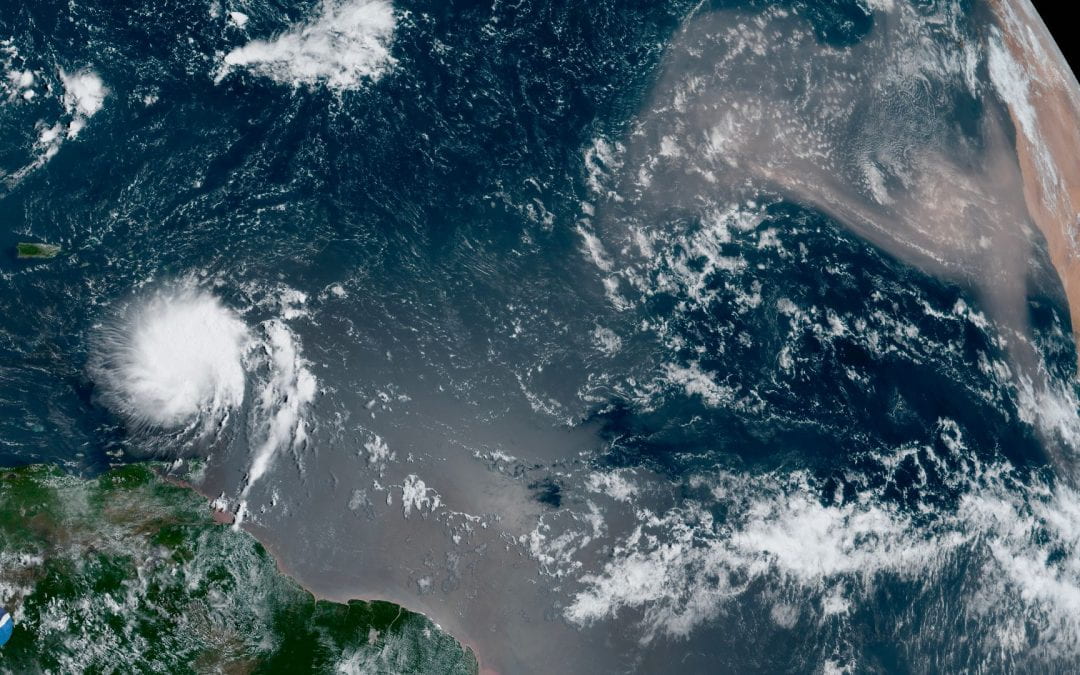Photo above: One of the largest plumes of Saharan dust in 2019 blowing across the Atlantic Ocean on Tuesday, Aug. 27, 2019, as Tropical Storm Dorian passed over the Lesser Antilles. Credit: NOAA
Does a giant plume of dust from the Saharan desert making its way across the ocean affect North Atlantic hurricanes? The Climate Extremes Modeling (CEM) Group at SoMAS, led by Dr. Kevin Reed, in collaboration with the Climate and Global Dynamics Laboratory at the National Center for Atmospheric Research, addressed this question last year in the results of a study published in Geophysical Research Letters.
The research team put together a climate model with sufficient resolution to represent tropical cyclones and ran two simulations for 1980–2012 with standard and low amounts of dust, respectively. The low dust simulation revealed that tropical cyclone frequency increased globally. Storms in the North Atlantic that are usually suppressed directly by African dust became more frequent, longer lived and slightly stronger. The lack of dust increased the destructive potential of North Atlantic storms.
Understanding how dust interacts with tropical cyclones in climate models will help us understand and prepare for the potential changes in hurricanes of the future.
The published article is available in Geophysical Research Letters.




